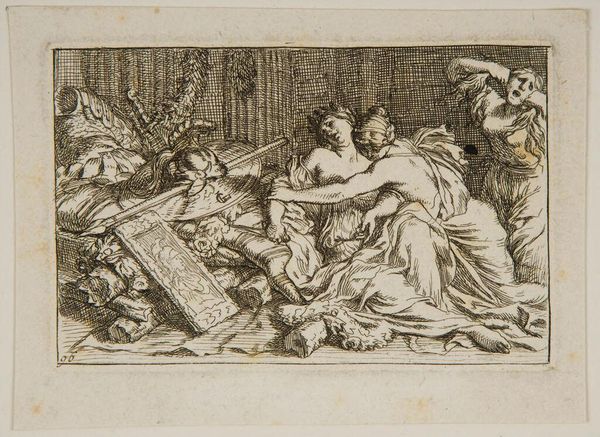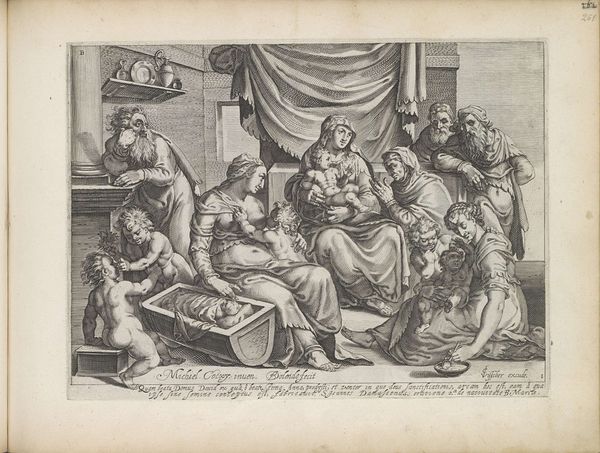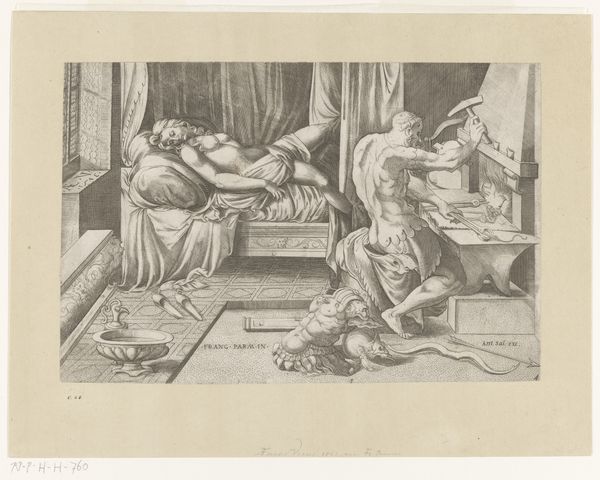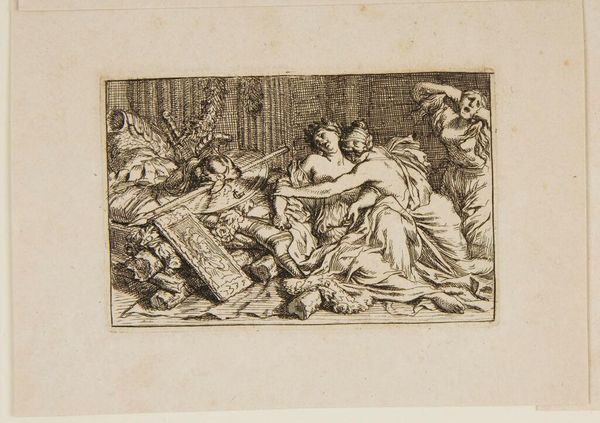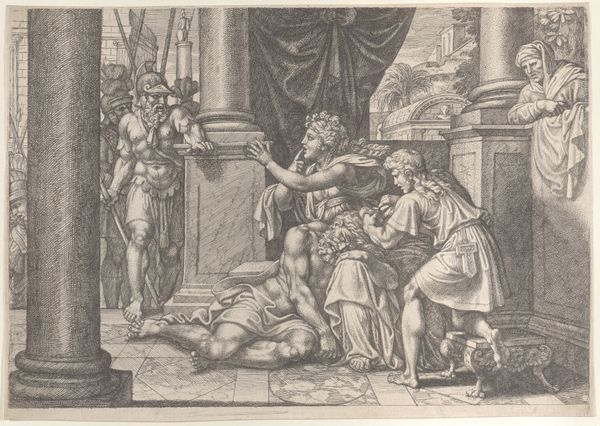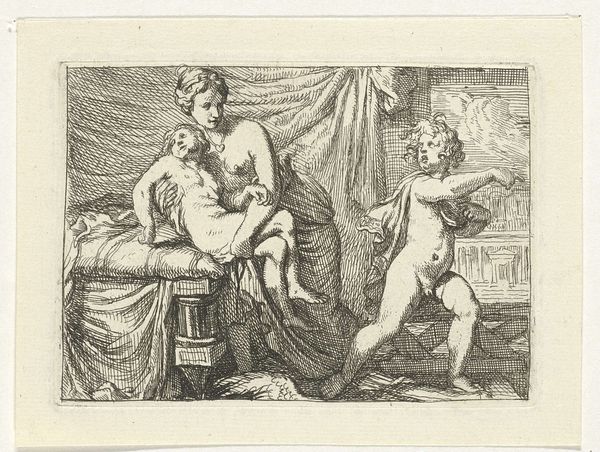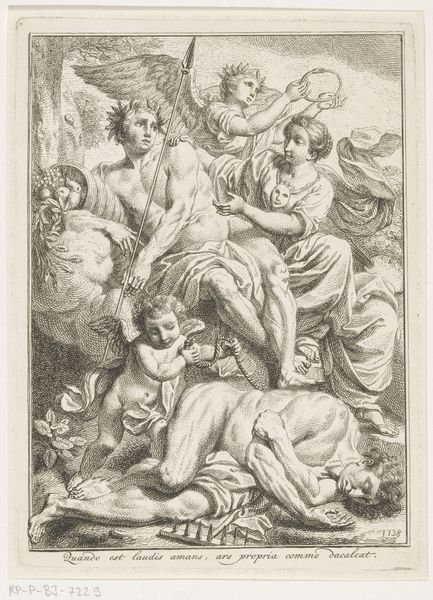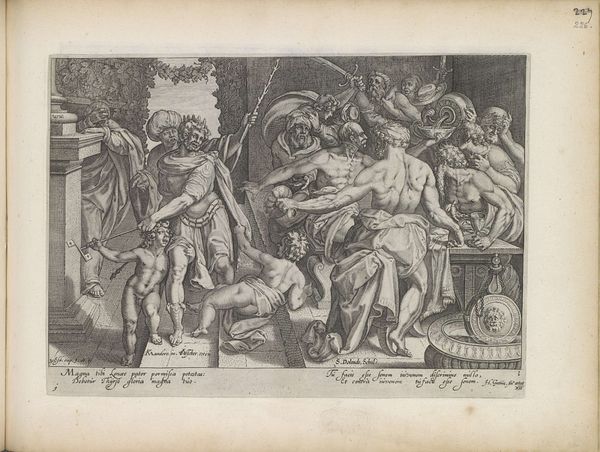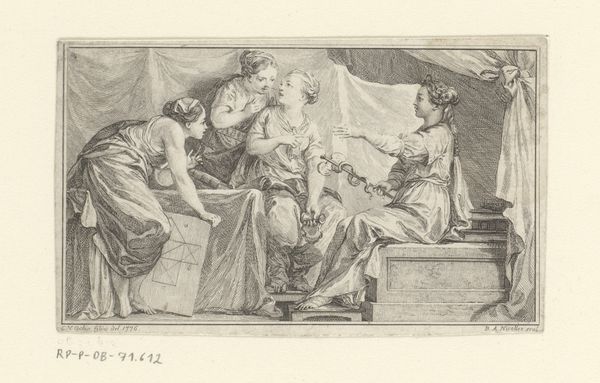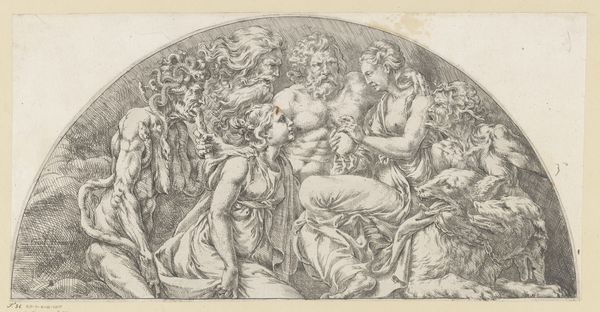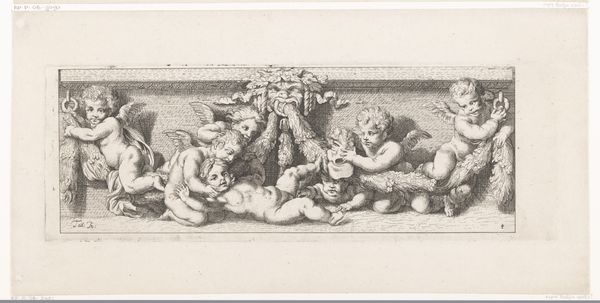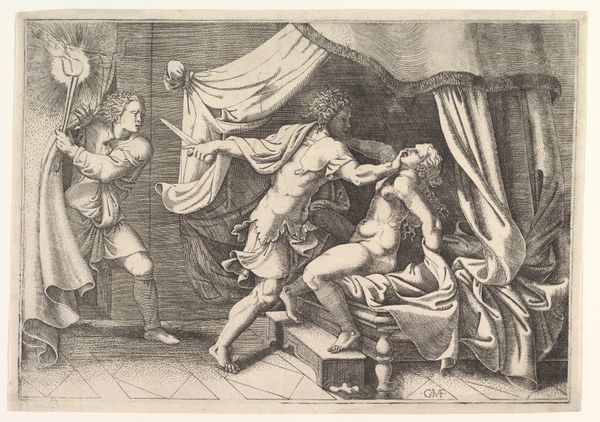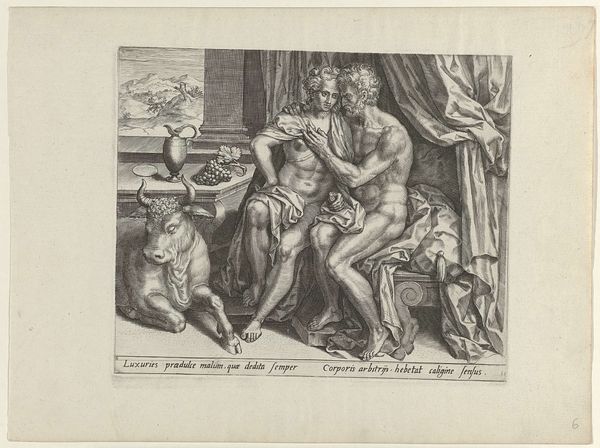
etching
#
baroque
#
etching
#
figuration
#
line
#
history-painting
Dimensions: height 68 mm, width 103 mm
Copyright: Rijks Museum: Open Domain
Editor: This is Gerard de Lairesse's 1668 etching, "Death of Dido", currently at the Rijksmuseum. It looks very dramatic, all swirling lines and heightened emotion. The stark contrast created by the etching process amplifies the sense of tragedy, I think. What do you make of it? Curator: The tragic drama certainly is apparent, but consider for a moment Dido's story. This image serves as a potent emblem of betrayal and its consequences. Dido, abandoned by Aeneas, chooses death over a life without him. Look at the objects around her: symbols of her former power and status, now rendered useless, discarded even. Editor: I see the armour and what looks like a royal banner. What about the other woman embracing her? Curator: That is likely Anna, Dido’s sister. Notice the blindfold – perhaps hinting at the blindness of passion or even fate itself. Remember, symbols such as the blindfold become charged through repeated use across art and time. Their appearance here reinforces an emotional and intellectual understanding we bring to this scene. Are you familiar with the story of Dido? Editor: Yes, Virgil’s *Aeneid*. So, you're suggesting that De Lairesse is not simply illustrating a scene, but also building upon centuries of accumulated meaning associated with this narrative and the symbols it employs? Curator: Precisely! And etching itself, with its precise lines and capacity for detail, reinforces this sense of controlled, almost intellectual, mourning. It's not just about the raw emotion, but the enduring legacy of the story and its power to resonate through images. Editor: I never thought about it that way, about how much the history of the symbol informs its reading. Curator: Consider the image an anchor into the collective conscious. This work invites us to unpack those layers of meaning and find our own connection to it. It’s quite rewarding, don’t you agree?
Comments
No comments
Be the first to comment and join the conversation on the ultimate creative platform.
